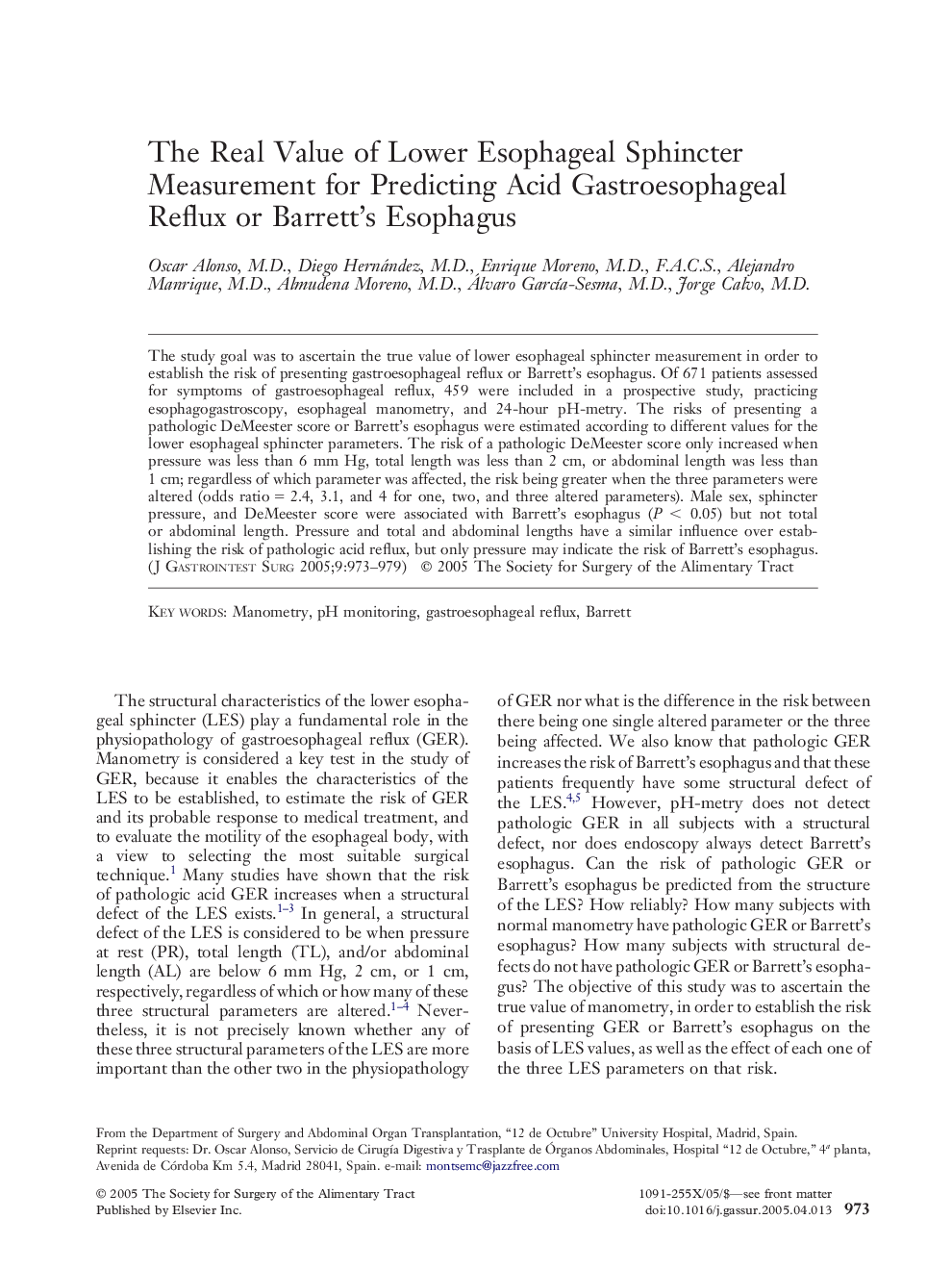| Article ID | Journal | Published Year | Pages | File Type |
|---|---|---|---|---|
| 9401281 | Journal of Gastrointestinal Surgery | 2005 | 7 Pages |
Abstract
The study goal was to ascertain the true value of lower esophageal sphincter measurement in order to establish the risk of presenting gastroesophageal reflux or Barrett's esophagus. Of 671 patients assessed for symptoms of gastroesophageal reflux, 459 were included in a prospective study, practicing esophagogastroscopy, esophageal manometry, and 24-hour pH-metry. The risks of presenting a pathologic DeMeester score or Barrett's esophagus were estimated according to different values for the lower esophageal sphincter parameters. The risk of a pathologic DeMeester score only increased when pressure was less than 6 mm Hg, total length was less than 2 cm, or abdominal length was less than 1 cm; regardless of which parameter was affected, the risk being greater when the three parameters were altered (odds ratio = 2.4, 3.1, and 4 for one, two, and three altered parameters). Male sex, sphincter pressure, and DeMeester score were associated with Barrett's esophagus (P < 0.05) but not total or abdominal length. Pressure and total and abdominal lengths have a similar influence over establishing the risk of pathologic acid reflux, but only pressure may indicate the risk of Barrett's esophagus.
Related Topics
Health Sciences
Medicine and Dentistry
Surgery
Authors
Oscar M.D., Diego M.D., Enrique M.D., F.A.C.S., Alejandro M.D., Almudena M.D., Álvaro M.D., Jorge M.D.,
